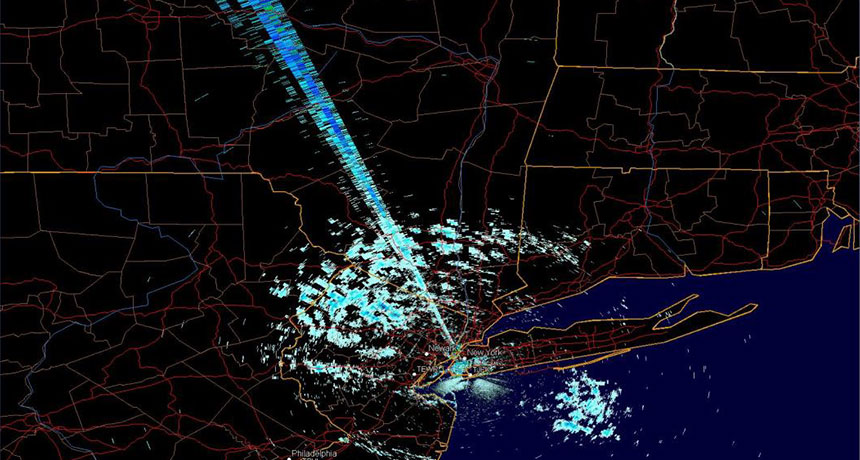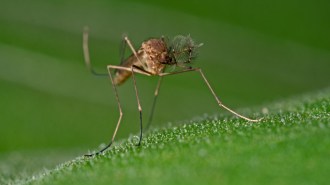Wi-Fi threatens weather forecasts
Wireless technologies increasingly interfere with storm-monitoring radar, meteorologists warn

OBSTRUCTED VIEW Interference from nearby wireless technology sources increasingly blemishes weather radar, meteorologists say. Unlicensed equipment created the blue slice of interference in this 2013 radar image from New York City's John F. Kennedy Airport, obscuring legitimate weather data (blue patches).
NOAA






